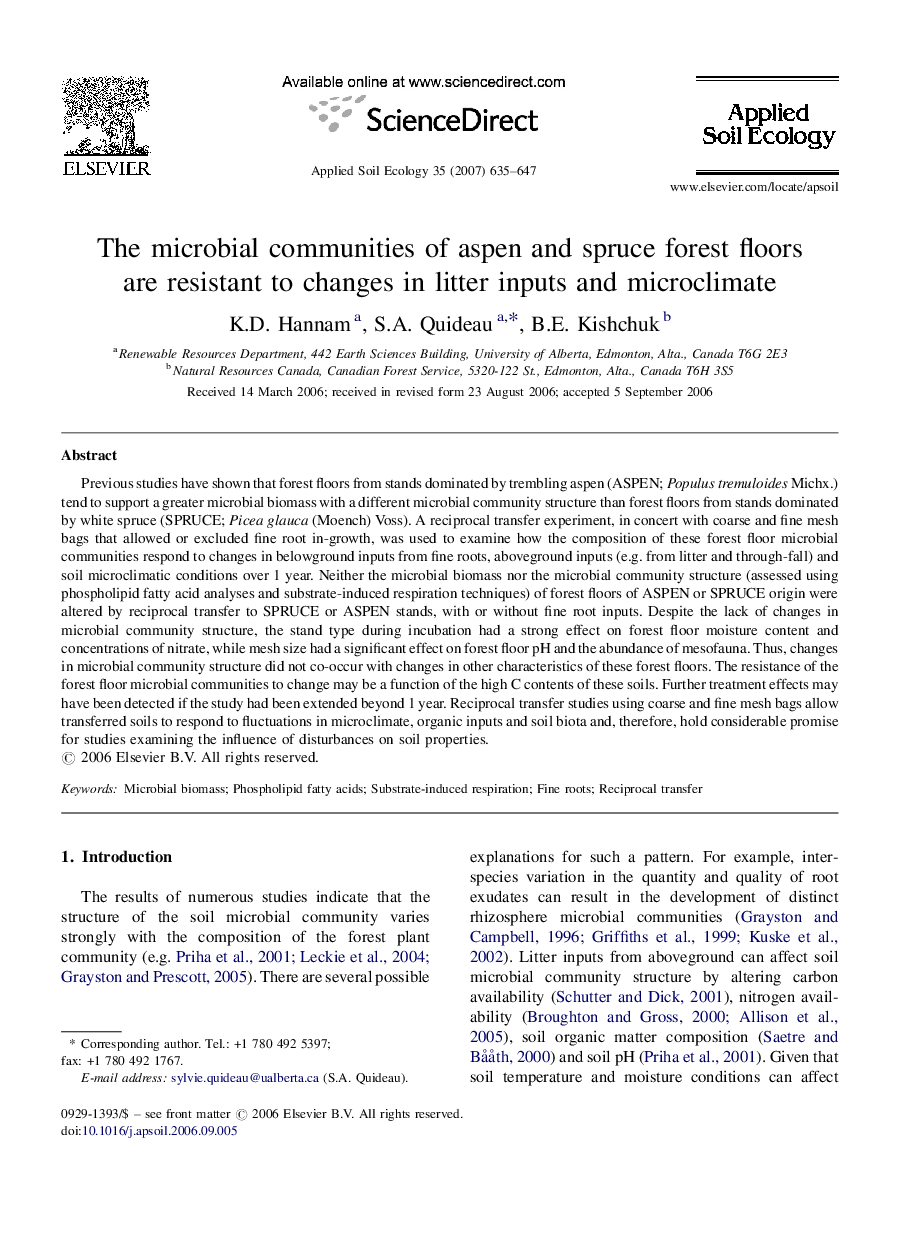| کد مقاله | کد نشریه | سال انتشار | مقاله انگلیسی | نسخه تمام متن |
|---|---|---|---|---|
| 4383253 | 1304256 | 2007 | 13 صفحه PDF | دانلود رایگان |

Previous studies have shown that forest floors from stands dominated by trembling aspen (ASPEN; Populus tremuloides Michx.) tend to support a greater microbial biomass with a different microbial community structure than forest floors from stands dominated by white spruce (SPRUCE; Picea glauca (Moench) Voss). A reciprocal transfer experiment, in concert with coarse and fine mesh bags that allowed or excluded fine root in-growth, was used to examine how the composition of these forest floor microbial communities respond to changes in belowground inputs from fine roots, aboveground inputs (e.g. from litter and through-fall) and soil microclimatic conditions over 1 year. Neither the microbial biomass nor the microbial community structure (assessed using phospholipid fatty acid analyses and substrate-induced respiration techniques) of forest floors of ASPEN or SPRUCE origin were altered by reciprocal transfer to SPRUCE or ASPEN stands, with or without fine root inputs. Despite the lack of changes in microbial community structure, the stand type during incubation had a strong effect on forest floor moisture content and concentrations of nitrate, while mesh size had a significant effect on forest floor pH and the abundance of mesofauna. Thus, changes in microbial community structure did not co-occur with changes in other characteristics of these forest floors. The resistance of the forest floor microbial communities to change may be a function of the high C contents of these soils. Further treatment effects may have been detected if the study had been extended beyond 1 year. Reciprocal transfer studies using coarse and fine mesh bags allow transferred soils to respond to fluctuations in microclimate, organic inputs and soil biota and, therefore, hold considerable promise for studies examining the influence of disturbances on soil properties.
Journal: Applied Soil Ecology - Volume 35, Issue 3, March 2007, Pages 635–647